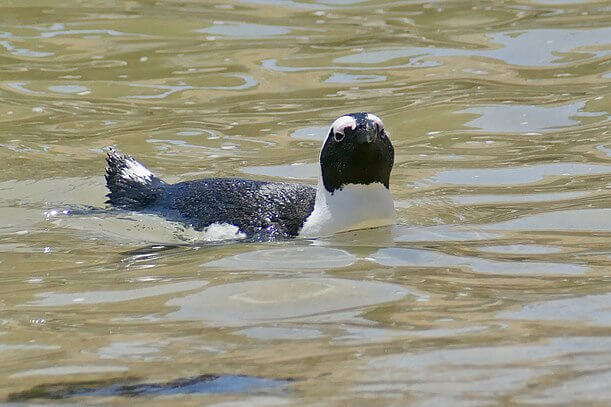
A landmark UN report highlights the escalating peril faced by the world’s most vulnerable migratory species, sounding a clarion call for urgent action to avert extinction.
From the enchanting flight of turtle doves to the majestic migrations of green turtles, from the elusive European eel to the charismatic African penguin, migratory species represent the intrepid adventurers of the animal realm. These nomads play a vital role in safeguarding Earth’s ecosystems, facilitating nutrient transfer, pollination, and woodland maintenance.
But decades of exploitation has left “species on the edge of extinction”.
Over 40 years ago, nations worldwide pledged to safeguard migratory species through the Convention on the Conservation of Migratory Species of Wild Animals (CMS). Now, a groundbreaking global assessment has unveiled the stark reality of their plight.
Of the 1,189 species scrutinised, one in five faces imminent extinction, with a staggering 97% of fish listed under the convention deemed at risk.
Amy Fraenkel, the UN Executive Secretary to the convention, said: “There has been a lack of attention for migratory species and if we don’t succeed in turning this around, we will see extinction. There are species that are already on the edge”.
Human activity emerges as the primary driver of this decline, encompassing excessive hunting, habitat destruction, climate change, and the encroachment of urbanisation, heralding noise and light pollution.
Dr Rob Cooke, an ecological modeller at the UK Centre for Ecology and Hydrology, said the report shows: “Migratory species face a cocktail of threats because they are moving through different habitats”.
Ms Fraenkel said although countries signed the convention four decades ago, “clearly some of these findings show there is illegal killing going on and lack of upholding the law”.
While efforts have targeted the illegal wildlife trade, the report underscores the lesser-addressed threats posed by recreational hunting and consumption. Shockingly, between 11 and 36 million birds fall victim to illegal killing annually in the Mediterranean region alone, with additional casualties reported in the Arabian Peninsula, Iran, and Iraq.
Kelly Malsch, lead author of the report and head of UNEP-WCMC’s Species Programme, underscores the inherent challenges in safeguarding migratory species, whose journeys span borders and continents.
She said: “Whether it is birds, or animals on land, or those swimming in our oceans, they are interacting with different country regulations which highlights the need for consistent approaches.”
Recommendations outlined in the report advocate for the identification and protection of critical sites along migration routes, the mitigation of infrastructure impeding migrations, and the establishment of protected corridors of land and sea.
Additionally, the report calls for the restoration of 30% of degraded land and marine areas to bolster conservation efforts.
By delineating migration corridors, conservationists aim to shield animals from anthropogenic threats. Satellite data has revealed alarming overlaps between migratory routes of sharks and global fishing zones, highlighting the pressing need for mitigation measures to combat incidental bycatch.
Inger Andersen, executive director of the UN Environment Programme, said she remains optimistic. “There is hope,” she added.
While some success stories, like the remarkable recovery of South Atlantic Humpback Whale populations, underscore the efficacy of conservation interventions, challenges persist.
Dr. Cooke emphasises the glaring gap in assessing thousands of migratory species, particularly insects, which play pivotal roles despite their overlooked status.
“This is a clear area to improve on,” he said.
Insect populations are difficult to measure; their small stature means they cannot wear trackers, and some, such as dragonflies, cannot be easily seen as they do not swarm like birds.
——————————————————————————
At Natural World Fund, we are passionate about stopping the decline in our wildlife.
The decline in our wildlife is shocking and frightening. Without much more support, many of the animals we know and love will continue in their decline towards extinction.
When you help to restore a patch of degraded land through rewilding to forests, meadows, or wetlands, you have a massive impact on the biodiversity at a local level. You give animals a home and food that they otherwise would not have had, and it has a positive snowball effect on the food chain.
We are convinced that this is much better for the UK than growing lots of fast-growing coniferous trees, solely to remove carbon, that don’t actually help our animals to thrive.
This is why we stand for restoring nature in the UK through responsible rewilding. For us, it is the right thing to do. Let’s do what’s right for nature!
Donate today at https://naturalworldfund.com/ and join in the solution!

